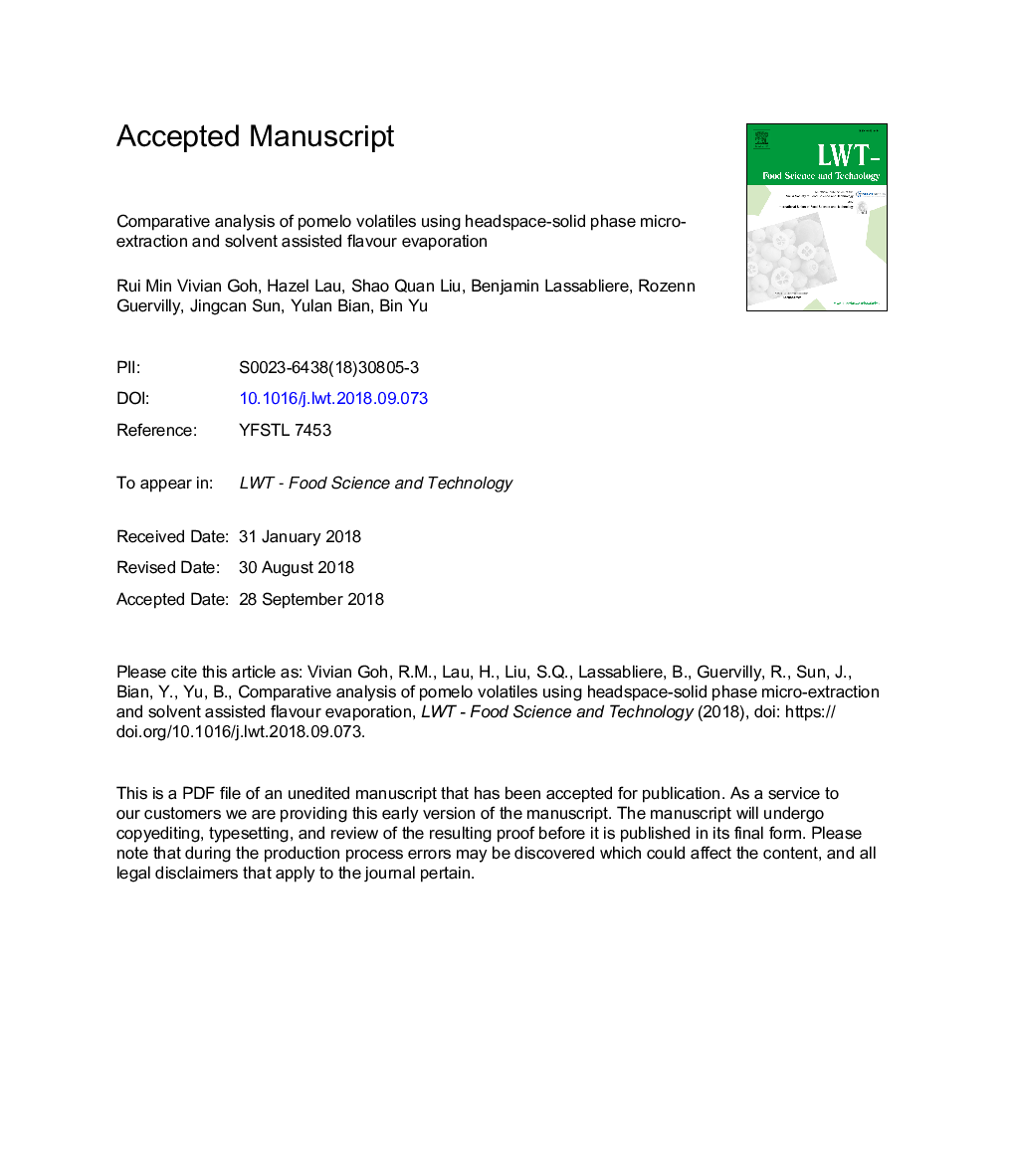| Article ID | Journal | Published Year | Pages | File Type |
|---|---|---|---|---|
| 11024883 | LWT - Food Science and Technology | 2019 | 53 Pages |
Abstract
In this work, headspace solid-phase microextraction (HS-SPME) was applied for a comparative study of the volatile profiles of flower, leaf, peel and juice from Malaysia pomelo. Different volatile profiles were observed in these different plant parts based on the analytical results obtained from HS-SPME analysed by gas chromatography-mass spectrometry coupled with a flame ionisation detector (GC-MS/FID). Pomelo peel contained the greatest abundance of volatiles, followed by the leaf, flower and juice. Moreover, the temperature parameters for solvent assisted flavour evaporation (SAFE) were systematically optimised using pomelo juice. The optimised water bath temperature was 20â¯Â±â¯0.5â¯Â°C and condenser temperature was 20â¯Â±â¯0.1â¯Â°C. In general, separation of pomelos by country was observed by principal component analysis (PCA). From the PCA loadings plot, compounds such as citronellol and α-terpineol were identified as contributors to separation in HS-SPME peel and juice respectively, while nootkatone was identified in SAFE extracts. Finally, the sugar and organic acid content of the pomelos were measured by high performance liquid chromatography (HPLC).
Related Topics
Life Sciences
Agricultural and Biological Sciences
Food Science
Authors
Rui Min Vivian Goh, Hazel Lau, Shao Quan Liu, Benjamin Lassabliere, Rozenn Guervilly, Jingcan Sun, Yulan Bian, Bin Yu,
